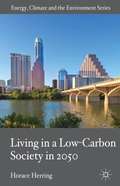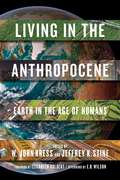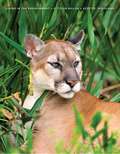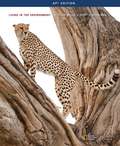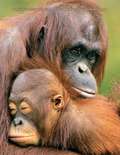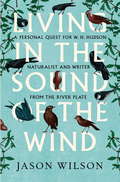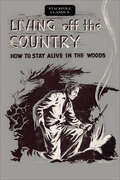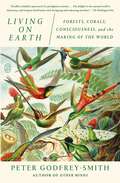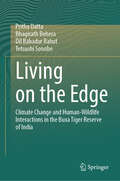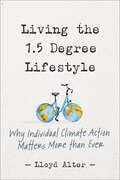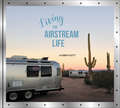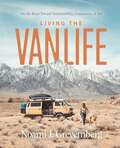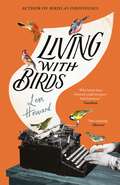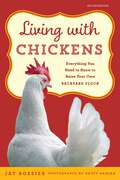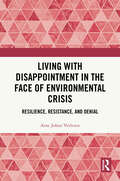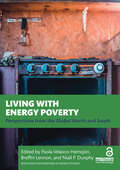- Table View
- List View
Living at a Lighthouse: Oral Histories from the Great Lakes
by Luanne Gaykowski KozmaOral histories talking about the everyday life while living at a lighthouse.
Living in Harmony: Nature Writing by Women in Canada
by Andrea Pinto Lebowitz20 Canadian women write about Origins, Explorations, Home, Encounters, Place, Gardens, For the Future, and On the Form.
Living in a Dangerous Climate
by Renée HetheringtonLiving in a Dangerous Climate provides a journey through human and Earth history, showing how a changing climate has affected human evolution and society. Is it possible for humanity to evolve quickly, or is slow, gradual, genetic evolution the only way we change? Why did all other Homo species go extinct while Homo sapiens became dominant? How did agriculture, domestication, and the use of fossil fuels affect humanity's growing dominance? Do today's dominant societies - devoted as they are to Darwinism and "survival of the fittest" - contribute to our current failure to meet the hazards of a dangerous climate? Unique and thought provoking, the book links scientific knowledge and perspectives of evolution, climate change, and economics in a way that is accessible and exciting for the general reader. The book is also valuable for courses on climate change, human evolution, and environmental science.
Living in a Low-Carbon Society in 2050
by Horace HerringCombining theory, case studies and speculative fiction, a range of contributors, from leading UK academics to pioneering renewable activists, create a compelling picture of the potential perks and pitfalls of a low carbon future.
Living in a Tree: Independent Reading Non-Fiction Pink 1a (Reading Champion #515)
by Jackie WalterThis book is part of Reading Champion, a series carefully linked to book bands to encourage independent reading skills, developed with UCL Institute of Education (IOE)Living in a Tree is a non-fiction text exploring the different animals that live in trees. The repeated sentence structure offers readers the opportunity for a very first independent reading experience with the support of the illustrations.Reading Champion offers independent reading books for children to practise and reinforce their developing reading skills.This early non-fiction text is accompanied by engaging artwork and a reading activity. Each book has been carefully graded so that it can be matched to a child's reading ability, encouraging reading for pleasure.
Living in the Anthropocene: Earth in the Age of Humans
by Edward O. Wilson Elizabeth Kolbert Thomas E. Lovejoy John W. Kress Jeffrey K. StineExplores the causes and implications of the Anthropocene, or Age of Humans, from multiple points of view including anthropological, scientific, social, artistic, and economic.Although we arrived only recently in Earth's timeline, humans are driving major changes to the planet's ecosystems. Even now, the basic requirements for human life--air, water, shelter, food, nature, and culture--are rapidly transforming the planet as billions of people compete for resources. These changes have become so noticeable on a global scale that scientists believe we are living in a new chapter in Earth's story: the Anthropocene, or Age of Humans. Living in the Anthropocene: Earth in the Age of Humans is a vital look at this era. The book contextualizes the Anthropocene by presenting paleontological, historical, and contemporary views of various human effects on Earth. It discusses environmental and biological systems that have been changed and affected; the causes of the Anthropocene, such as agricultural spread, pollution, and urbanization; how societies are responding and adapting to these changes; how these changes have been represented in art, film, television, and literature; and finally, offers a look toward the future of our environment and our own lives.
Living in the Environment (17th Edition)
by G. Tyler Miller Scott E. SpoolmanThis book provides you with basic scientific tools for understanding and thinking critically about the environment and the environmental problems we face.
Living in the Environment: Principles, Connections, and Solutions
by G. Tyler Miller Scott E. Spoolman Jr.Learn how to make a difference in our environment! Using sustainability as the central theme, this current and thought-provoking book provides you with basic scientific tools for understanding and thinking critically about the environment and the environmental problems we face. Updated with new information, art, and "Good News" examples, this engaging book offers vivid case studies and hands-on quantitative exercises. The concept-centered approach transforms complex environmental topics and issues into key
Living in the Environment: Principles, Connections, and Solutions (13th Edition)
by G. Tyler MillerMiller's LIVING IN THE ENVIRONMENT, 13th Edition is a science-based book designed for introductory courses in environmental science. Tyler Miller is the most successful author in environmental science instruction because of his attention to currency, trend-setting presentation, outstanding student and instructor supplements, and his ability to retain and refine the pedagological hallmarks on which instructors have come to depend. In this edition Miller has added an on-line Web- based resource, entitled the Resource Integration Guide, which is updated quarterly with CNN. Today video clips, animations, and articles from InfoTrac. College Edition. Instructors can seamlessly incorporate current news articles and research findings to support classroom instruction. And, for the first time ever, students will receive a complementary CD-ROM entitled Interactive Concepts in Environmental Science. This groundbreaking addition integrates nearly 100 engaging animations and interactions with chapter summaries, flashcards, and Web-based quizzes. Organized by chapter, students will find links to relevant resources, narrated animations, interactive figures and prompts to review material and test themselves. The content in the Thirteenth Edition of LIVING IN THE ENVIRONMENT is everything you have come to expect and more.
Living in the Environment: Principles, Connections, and Solutions (Wadsworth Biology Ser.)
by Jr. G. Tyler MillerNIMAC-sourced textbook
Living in the Sound of the Wind: A Personal Quest for W.H. Hudson, Naturalist and Writer from the River Plate
by Jason WilsonW. H. Hudson was brought up on the pampas, where he learnt from gauchos about frontier life. After moving to London in 1874, Hudson lived in extreme poverty. Like his friend Joseph Conrad, Hudson was an exile, adapting to England. He never returned to Argentina.Wilson unravels Hudson’s English dream, his natural history rambles, and his work to protect birds. He remains both a complex witness to his homeland before mass immigration and to his England of the mind, before the urban sprawl.Praise for Jason Wilson: Tireless, shrewd, erudite Jason Wilson, mixing hard fact and anthology, provides the perfect outfit of allusion and comparative experience - Jonathan Keates, ObserverPut his treasure trove into your pocket. - Anthony Sattin, Sunday TimesThe idea is so simple that it must be original. This inaugural book might prove to be a landmark. - Nicholas Shakespeare, Daily Telegraph
Living off the Country: How to Stay Alive in the Woods (Stackpole Classics)
by Bradford Angier&“If you&’re planning any wilderness adventure, you would do well to get acquainted with the valuable information in this book.&” —Nature magazine Living off the Country helps outdoor enthusiasts enjoy time in nature without worry, offering take-along tips for finding free appetite fillers, thirst quenchers, weapons and warmth in all kinds of situations. In a clear and understandable way, Brad Angier provides a harvest of handy, helpful hints about the necessities of life . . . where to look for the natural-growing supply of edible, unusual, taste-tickling plants, bushes, and fruit; make-shift but sure-fire ways to catch fish; easy ways to utensil-less cooking; handily constructing off-beat shelters; best ways to conserve and use available clothing; what to do about finding your way; backwoods medicine for emergencies . . . and much more help anyone enjoying the outdoors understand how to stay alive in the woods. For any kind of wilderness adventure, pack Living Off the Country with other survival gear.
Living on Earth: Forests, Corals, Consciousness, and the Making of the World
by Peter Godfrey-SmithOne of the Washington Post's 50 Best Nonfiction Books of 2024The bestselling author of Other Minds shows how we and our ancestors have reinvented our planet.If the history of the Earth were compressed down to a year, our species would arise in the last thirty minutes or so of the final hour. But life itself is not such a late arrival: It has existed on Earth for something like 3.7 billion years—most of our planet’s history and over a quarter of the age of the universe (as far as we can tell). What have these organisms—bacteria, animals, plants, and the rest—done in all this time? In Living on Earth, the philosopher Peter Godfrey-Smith proposes a new way of understanding how the actions of living beings have shaped our planet. Where his acclaimed books Other Minds and Metazoa explored the riddle of how conscious minds came to exist on Earth, Living on Earth turns to what happens when we look at the mind from another side—when we come to see organisms as active causes, not merely as results of the evolutionary process. The planet we inhabit is significantly the work of other living beings, who shaped the environments that we ourselves later transformed. To that end, Godfrey-Smith takes us on a grand tour of the history of life on earth. He visits Rwandan gorillas and Australian bowerbirds, returns to coral reefs and octopus dens, considers the impact of language and writing, and weighs the responsibilities our unique powers bring with them, as they relate to factory farming, habitat preservation, climate change, and the use of animals in experiments. Ranging from the seas to the forests, and from animate matter’s first appearance to its future extinction, Godfrey-Smith offers a novel picture of the course of life on Earth and how we might meet the challenges of our time, the Anthropocene.
Living on the Edge: Climate Change and Human-Wildlife Interactions in the Buxa Tiger Reserve of India
by Tetsushi Sonobe Pritha Datta Bhagirath Behera Dil Bahadur RahutIn a rapidly changing climate, understanding the complex interactions between humans and wildlife is crucial for fostering coexistence. This book offers an in-depth analysis of how climate change exacerbates conflicts between local communities and wildlife in the Buxa Tiger Reserve. Through historical insights, current challenges, and community narratives, it reveals the adaptive strategies employed by villagers and their unintended consequences on wildlife. Readers will gain valuable insights into the cascading effects of these conflicts and find evidence-based policy recommendations aimed at promoting sustainable and harmonious coexistence. Essential for conservationists, policymakers, and anyone interested in sustainable development, this book provides practical solutions for mitigating human-wildlife conflicts in the face of climate change.
Living the 1.5 Degree Lifestyle: Why Individual Climate Action Matters More than Ever
by Lloyd AlterStop thinking about efficiency and start thinking about sufficiency Living the 1.5 Degree Lifestyle reveals the carbon cost of everything we do, identifying where we can make big reductions, while not sweating the small stuff.The international scientific consensus is that we have less than a decade to drastically slash our collective carbon emissions to keep global heating to 1.5 degrees and avert catastrophe. This means that many of us have to cut our individual carbon footprints by over 80% to 2.5 tonnes per person per year by 2030. But where to start?Drawing on Lloyd Alter's journey to track his daily carbon emissions and live the 1.5 degree lifestyle, coverage includes:What it looks like to live a rich and truly green lifeFrom take-out food, to bikes and cars, to your internet usage – finding the big wins, ignoring the trivial, and spotting marketing ploysThe invisible embodied carbon baked into everything we own and why electric cars aren't the answerHow to start thinking about sufficiency rather than efficiencyThe roles of individuals versus governments and corporations.Grounded in meticulous research and yet accessible to all, Living the 1.5 Degree Lifestyle is a journey toward a life of quality over quantity, and sufficiency over efficiency, as we race to save our only home from catastrophic heating.
Living the Airstream Life
by Karen FlettIllustrated with rare and exclusive images from the official company archives, an authoritative and entertaining guide to the wildly popular, beautifully designed luxury recreational vehicle that has become a cultural icon, embodying the American spirit of freedom and adventure—and the ideal in mobile living.With its distinctive silver-bullet shaped profile, the Airstream has been an integral part of the American recreational landscape for more than eighty-five years. Since the 1930s, thousands of Americans have used it as a personal canvas to paint their own unique story as they’ve traveled the road of life, and today, these stunning, nostalgia-laden vehicles are more popular than ever. In Living the Airstream Life, Karen Flett tells the unique story of the designers who have transformed the brand into a mainstay of American life and the dreamers who have found their home, and their heart, in an Airstream. Living the Airstream Life is a tour along the diverse roads aficionados have taken in chasing their Airstream dreams. Stunning color photographs featuring new and vintage versions and compelling stories capture the allure of the Airstream and offer advice and insight on the practicalities of adopting this lifestyle. With spectacular photography and compelling stories, Living the Airstream Life offers inspiration for those actively pursing the dream of life on the road—whether for permanent living or as a temporary escape from the daily grind—and everyone who wants to live vicariously through those who dare.
Living the RV Life: Your Ultimate Guide to Life on the Road
by Marc Bennett Julie BennettWhether you’re downsizing or thrill-seeking—or anything in between—find out if the RV lifestyle is right for you, and learn how to transition from a life of traditional home-ownership to one on the road. Do you love traveling? Meeting new people and seeing new places? Are you craving a life that feels meaningful and new? The RV lifestyle could be the answer. Both aspirational and practical, Living the RV Life is your ultimate guide to living life on the road—for people of all ages looking to downsize, travel, or work on the go. Learn if life in a motor home is right for you, with insightful details on the experiences of full-time RV-ers, tips for how to choose an RV (how big? new or used?), whether to sell your home (and if not, what to do with it), model costs, sample routes and destinations, basic vehicle maintenance, legal and government considerations—and much more! Written in a light and an easy-to-understand style, Living the RV Life is your bible to living a mobile life.
Living the Vanlife: On the Road Toward Sustainability, Community, and Joy
by Noami GrevembergDiscover what it&’s really like to live and work full-time on the road in a camper van from eco-vanlifer and founder of the Diversify Vanlife movement, Noami Grevemberg.Feeling dissatisfied with her office job and her &“stationary home,&” in 2016 Noami Grevemberg took a bold step. She quit her job, sold her belongings, and set out in her 1985 VW Vanagon to pursue a life of simplicity and travel with her husband and German Shepherd by her side. In her years living fulltime on the road, Noami has become an expert in the many aspects of vanlife. In her book Living the Vanlife, she digs into all aspects of the lifestyle, from getting over the uncomfortable feeling of uncertainty, to creating a sustainable, thriving life of adventure and a captivating path of choosing whatever it is you truly want for yourself. Through personal stories and actionable advice, Noami candidly and compassionately demonstrates for readers that challenging the "status quo&” means taking bold steps, venturing out of your comfort zone, taking risks, and living intentionally. As a Trinidadian immigrant, Noami also takes a practical look at life on the road as a BIPOC navigating many intersections and speaks to topics like converting a van to fit your specific needs, budgeting for vanlife, finding employment, staying safe, and building a supportive community on the road. Featuring evocative full-color photographs of Noami&’s journey, Living the Vanlife is an inclusive and celebratory look at an increasingly popular way of life.
Living with Biodiversity in an Island Ecosystem
by Takuro FurusawaThis book presents a detailed case study of ecological and cultural interactions between the people and their natural environment at Roviana Lagoon, Solomon Islands, a land of rich biodiversity. This volume documents the subsistence lifestyle of the people and their indigenous ecological knowledge, analyzes the effects of recent socioeconomic changes on the people and ecosystem, and proposes future directions for sustainability. The contents have been designed to answer questions such as, "What kinds of factors have determined whether current human actions are sustainable or will result in a collapse of biocultural diversity in the Solomon Islands?"; "How do Solomon Islanders recognize nature and biodiversity conservation in traditional ways or under socioeconomic changes?"; and "How can harmony between humans and nature be achieved in the Solomon Islands under changing socioeconomic conditions?" A truly transdisciplinary approach is applied, integrating theories of human ecology, quantitative ethnobiology, and folk ecology and methods of vegetation surveys, ethnographic fieldwork, remote sensing, and health surveys, in order to link different domains of humans and the natural world. In addition, this work focuses on the importance of understanding of diversity not only in natural environments, but also in human societies, and will be a valuable source for many, especially ecologists, anthropologists, conservation practitioners, and rural development planners.
Living with Birds: The true story of one woman’s extraordinary relationship with wild birds
by Len HowardLen Howard forged extraordinary relationships with the birds in her Sussex garden during the 1950s. This groundbreaking work in bird studies is also a captivating and immersive piece of nature writing.This bird biography tells the story of one exceptional Great Tit called Star. In opening her home to wild birds, Len Howard gained their trust and made astonishing discoveries about their capabilities. Star’s character and intelligence is revealed, and with patience, consistency and sensitivity Howard even succeeds in teaching Star to count using taps of her beak.Full of joy and wonder, as well as deep knowledge and fascinating detail, Living with Birds encompasses bird studies of all kinds including the fate of a lame fledgling, the bond between Great Tit parents and their babies and observations of migrant birds. It is also the story of how Howard succeeded in developing such an unusual relationship with the wild birds in her garden.'Howard seems to have stood on the brink of communication with a wild bird, something till now hardly conceivable...awe-inspiring' Observer
Living with Chickens: Everything You Need To Know To Raise Your Own Backyard Flock (Living with)
by Jay RossierA revised and updated bestseller Revised in coordination with the American Poultry AssociationCovers all the essentials of raising and keeping chickens.More than 75 color photographs and illustrations.People across the country are raising chickens, whether for food or companionship. You can, too, with this indispensable guide. Straightforward advice and dozens of clear, detailed illustrations gives any future chicken farmer the tools he needs to get started, from step-by-step instructions on building the coop to a brief background on chicken biology; from hints on getting high-quality eggs from the hens, to methods for butchering. Full-color photographs of the birds and their landscape round out this comprehensive book. This bestselling book has been completely revised and updated. Jay Rossier was coauthor of A New Lease on Farmland, published by the E. F. Schumacher Society, and wrote occasional book reviews for Northern Woodlands magazine.
Living with Disappointment in the Face of Environmental Crisis: Resilience, Resistance, and Denial
by Arne Johan VetlesenWhile the impacts of climate change become increasingly severe, efforts to prevent them suffer one blow after the other, as seen in the rise of far-right populist parties in Western democracies. Why does denialism thrive when blatantly contradicted by the realities before our very eyes, be it wild-fires, floods, drought, and melting glaciers? Should we abandon the assumption that the more solid the knowledge about climate change, the more eager will ordinary people as well as political leaders be to take action?This book sets out to explain the contradiction witnessed between knowledge and action. Inspired by Clive Hamilton’s claim that “denial is due to a surplus of culture rather than a deficit of information”, the book critiques the focus on “cognitive disso-nance” in individual agents advocated by climate psychology as well as the individualistic bias in liberal political theory. To get out of the current theoretical as well as political impasse, the author suggests three moves are necessary: from knowledge to first-hand experience, and so to feelings; from the tension within the individual to the social organization of denial; and from the obsession with personal responsibility – nowadays in the guise of building resilience – to exposing the complicity of the culture of neoliberalism in the intimately intertwined crisis of politics and the climate alike.A highly timely and sharp analysis of the roots of inaction and denial and possible strategies for resistance, the book will appeal to scholars and upper-level students with interests in social, political, and environmental philosophy and psychology; political theory; and environmental studies.
Living with Energy Poverty: Perspectives from the Global North and South (Routledge Explorations in Energy Studies)
by Paola Velasco-Herrejón Breffní Lennon Niall P. DunphyLiving with Energy Poverty: Perspectives from the Global North and South expands our collective understanding of energy poverty and deepens our recognition of the phenomenon by engaging with the lived experiences of energy-poor households across different contexts.Understanding the lived experience of energy poverty is an essential component in the design of any effort to alleviate what is fundamentally a deep-rooted, multi-faceted, wickedly complex problem. This requires a nuanced understanding of the causal factors and the research methods that can respond to the flexible spatial and temporal nature of the condition, as well as its wellbeing and justice implications. Drawing together the expertise and connectedness of authors from the Global South and North, this book presents novel approaches to understanding the often hidden forms of domestic energy deprivation. Case studies from 20 countries provide critical perspectives on this phenomenon while analysing the policy practices, government strategy, and sustainability implications of divergent manifestations. The book takes a multidimensional perspective, challenging the bias towards energy production and service provision, which often do not align with the aspirations and realities of energy households across global contexts, thus facilitating a useful dialogue on the nature of energy poverty.The book is a timely source for policymakers, practitioners, and scholars seeking fresh, diverse insights into the everyday reality of energy poverty and wanting to better understand the challenges a people-centred, just energy transition can present.Chapter 1 of this book is freely available as a downloadable Open Access PDF at http://www.taylorfrancis.com under a Creative Commons [Attribution-Non Commercial-No Derivatives (CC-BY-NC-ND)] 4.0 license.Chapter 2 of this book is freely available as a downloadable Open Access PDF at http://www.taylorfrancis.com under a Creative Commons [Attribution-Non Commercial-No Derivatives (CC-BY-NC-ND)] 4.0 license.Chapter 22 of this book is freely available as a downloadable Open Access PDF at http://www.taylorfrancis.com under a Creative Commons [Attribution-Non Commercial-No Derivatives (CC-BY-NC-ND)] 4.0 license.
Living with Environmental Change: Waterworlds
by Kirsten Hastrup Cecilie RubowClimate change is a lived experience of changes in the environment, often destroying conventional forms of subsistence and production, creating new patterns of movement and connection, and transforming people’s imagined future. This book explores how people across the world think about environmental change and how they act upon the perception of past, present and future opportunities. Drawing on the ethnographic fieldwork of expert authors, it sheds new light on the human experience of and social response to climate change by taking us from the Arctic to the Pacific, from the Southeast Indian Coastal zone to the West-African dry-lands and deserts, as well as to Peruvian mountain communities and cities. Divided into four thematic parts - Water, Landscape, Technology, Time – this book uses rich photographic material to accompany the short texts and reflections in order to bring to life the human ingenuity and social responsibility of people in the face of new uncertainties. In an era of melting glaciers, drying lands, and rising seas, it shows how it is part and parcel of human life to take responsibility for the social community and take creative action on the basis of a localized understanding of the environment. This highly original contribution to the anthropological study of climate change is a must-read for all those wanting to understand better what climate change means on the ground and interested in a sustainable future for the Earth.


